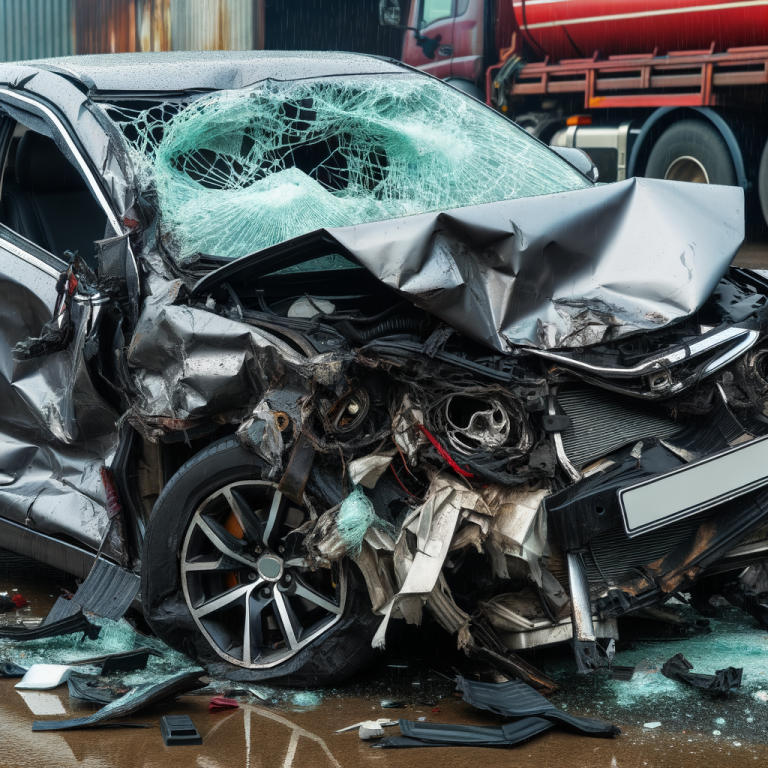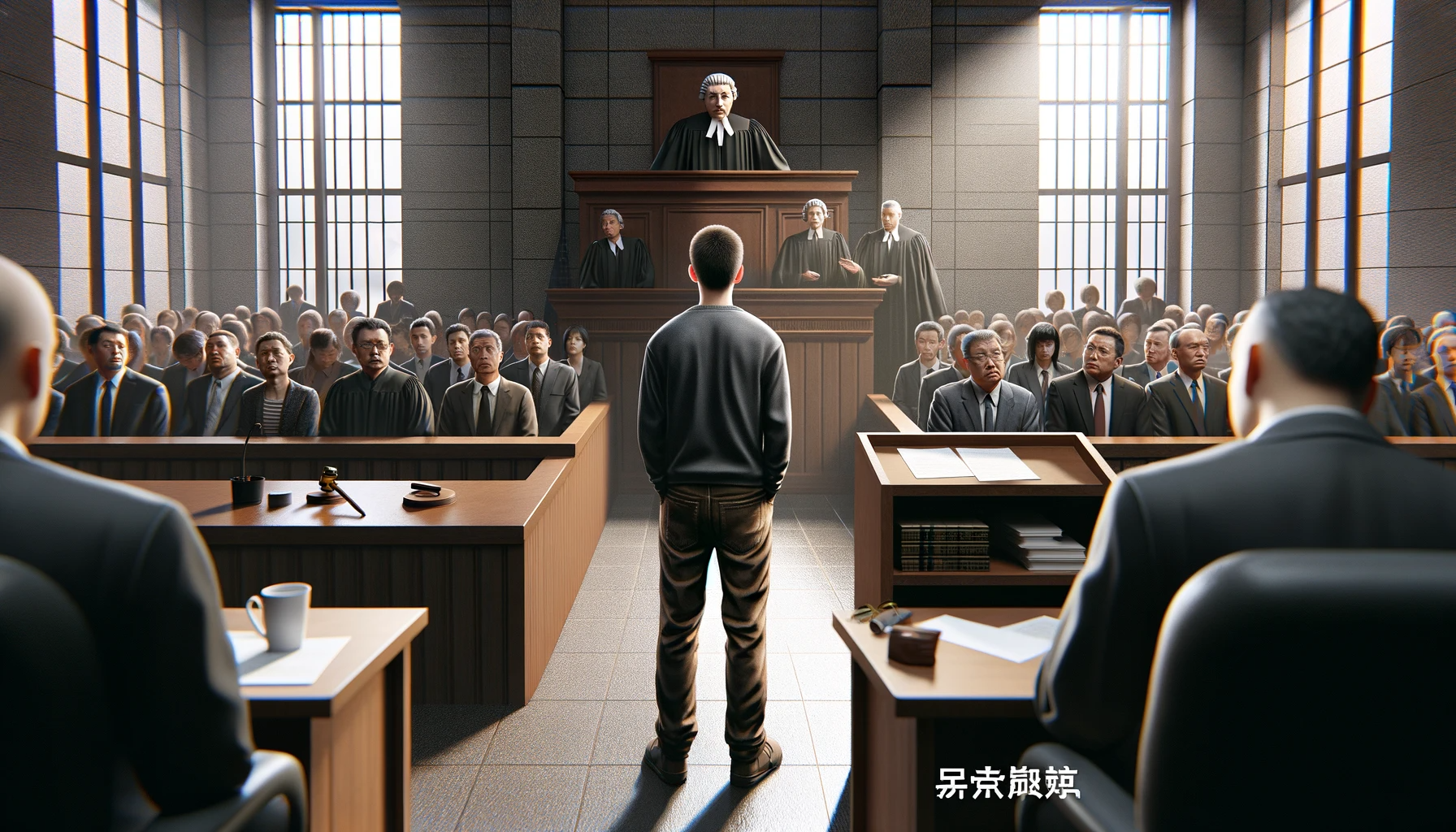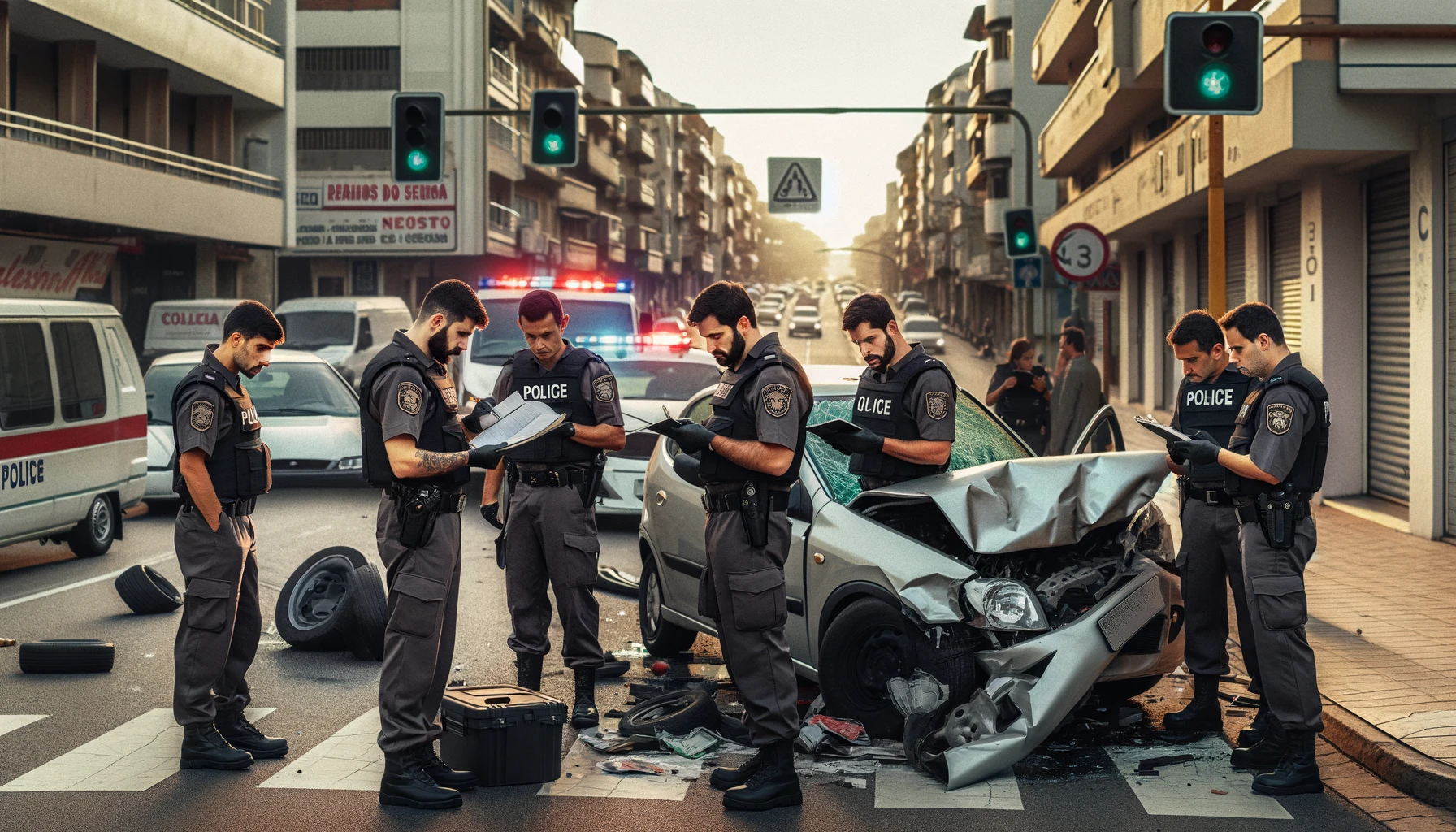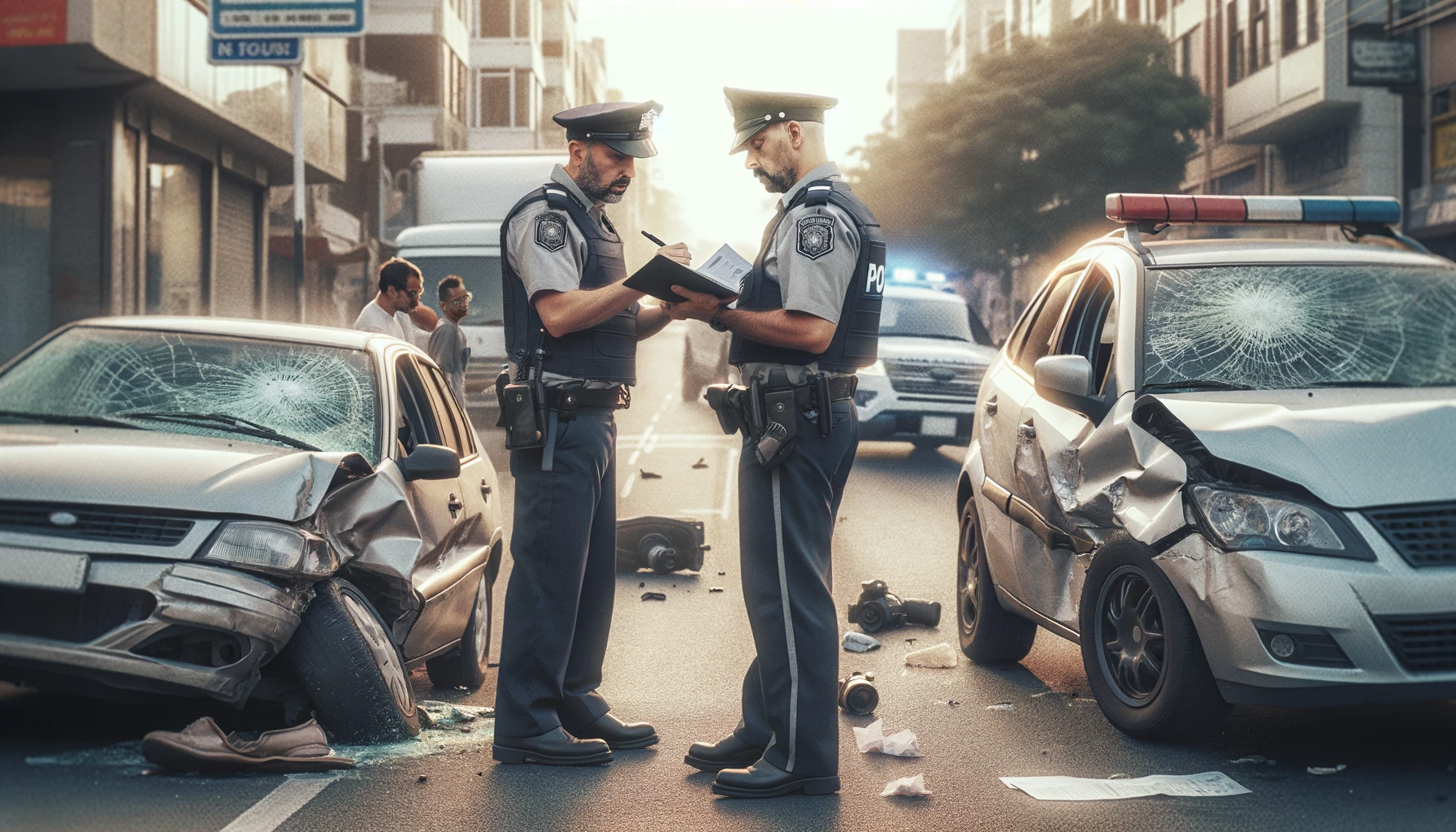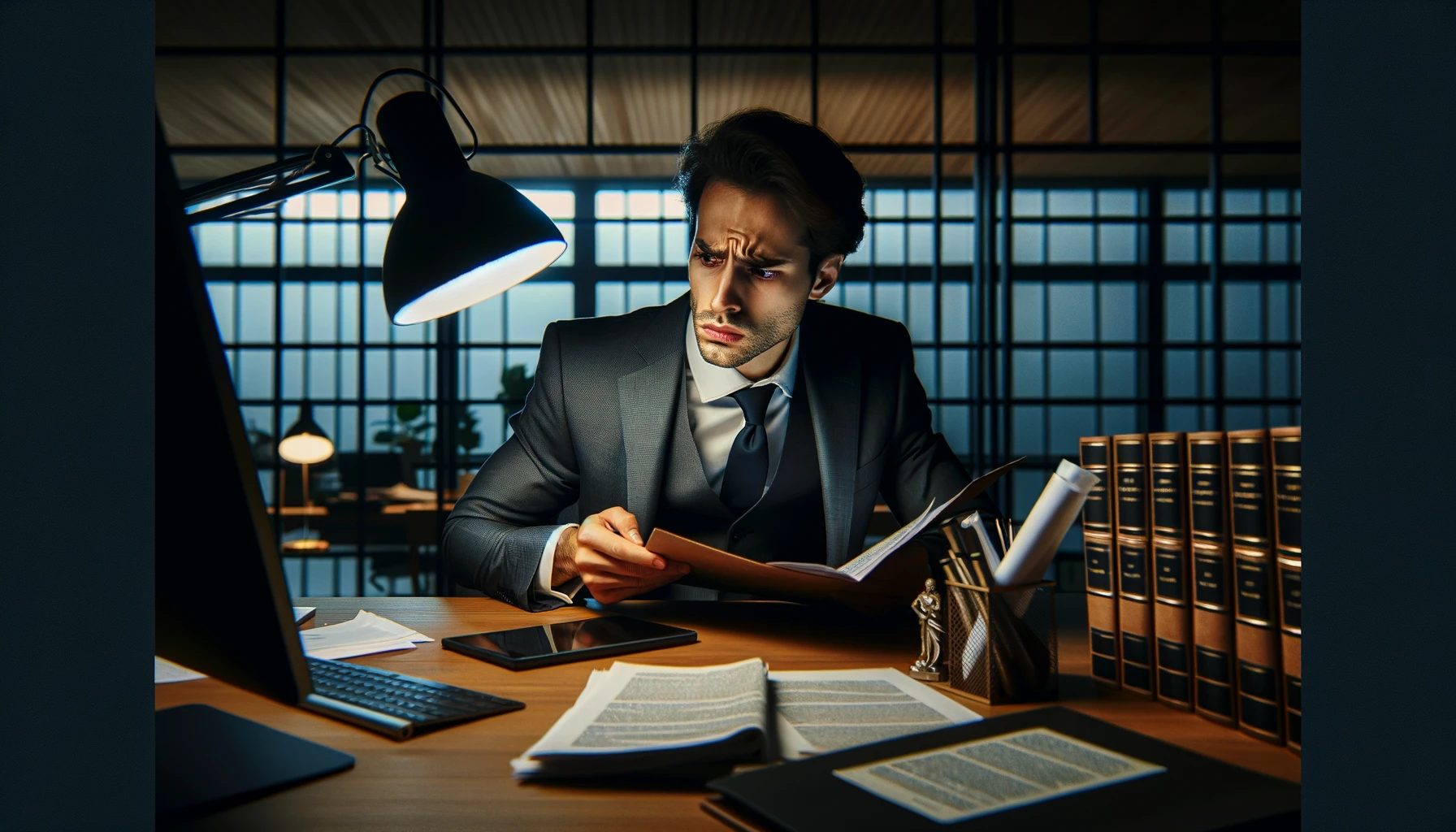Understanding the Concept of Guilt
Understanding the concept of guilt entails a deep examination of the term and its application within the social, legal, and psychological contexts. While it's commonly used in discourse, its nuanced understanding is necessary to fully comprehend how it is proven.
The Psychological Perspective on Guilt
Guilt is considered a complex emotion that can be broadly defined as a feeling of remorse or responsibility over a perceived wrongdoing, whether real or imagined. In a psychological context, guilt is often associated with feelings of shame, embarrassment, and regret. This can have both positive and negative implications: While it can lead to self-regulation, nurturing empathy and responsibility, excessive guilt could also pave the way for mental health issues such as anxiety or depression.
Legal Interpretation of Guilt
In the legal realm, guilt refers to the state of having committed a
Criminal act or violation of the law. Proof of guilt requires specific elements, such as intent, action, and consequence, typically determined through evidence, witness testimony, and legal arguments. Presumed innocence until proven guilty is a fundamental principle in most legal systems, emphasizing the importance of a fair trial and due process for everyone accused of a crime.
Social Context of Guilt
In a societal context, guilt is seen as an influential force for maintaining social order. It acts as a moral compass, discouraging individuals from engaging in behavior that may cause harm or distress to others. This inherent sense of right and wrong allows societies to operate more harmoniously, limiting disruptive or destructive behaviour.
Religious Implications of Guilt
Religions across the world often address the concept of guilt, either using it as a deterrent tool against sin or encouraging repentance for past transgressions. Different religious traditions have various interpretations and approaches to guilt. In many instances, overcoming guilt is linked to spiritual growth, forgiveness, and redemption.
The multifaceted nature of guilt is what makes its understanding so complex. Parsing through how it is viewed and used within these different contexts is crucial for an in-depth exploration of how guilt is proven, and the implications thereof.
Elements of a Crime: Actus Reus and Mens Rea
Understanding Actus Reus
Actus Reus, often referred to as the guilty act, is one of the core elements required to establish a crime. It pertains to the physical component of a
Criminal act and underscores its tangible nature. This element necessitates that a crime must have been an actual occurrence and not just a thought or intention. It can be in the form of actions, like theft or assault, or omissions, such as failing to feed a dependent child, leading to harm.

The Concept of Mens Rea
Mens Rea, also known as the guilty mind, is another central element in establishing
Criminal liability. It speaks to the mental state of the defendant at the time the crime was committed. Mens Rea helps determine whether the act was done intentionally, recklessly, negligently or without knowledge, which ultimately influences the severity of the punishment. This concept substantiates that a crime involves not merely the act, but also the accompanying mental state of the individual performing the act.
The Interplay of Actus Reus and Mens Rea
The intersection of Actus Reus and Mens Rea is crucial in the determination of criminal guilt. In general, for a person to be legally guilty of a crime, it needs to be proven that they committed the Actus Reus while having the requisite Mens Rea. For example, if a person intended to cause harm (Mens Rea) but didn’t actually carry it out (Actus Reus), they may not be guilty. Conversely, if harm was caused unintentionally (absence of Mens Rea) even though the Actus Reus is present, this could lead to different legal considerations.
Exceptions and Variations in Use
While Actus Reus and Mens Rea are fundamental to most crimes, there are exceptions. Some crimes, often referred to as 'strict liability' crimes, do not require Mens Rea; the commission of the act alone is enough to establish guilt. Additionally, the interpretation and application of these elements can vary depending on jurisdiction due to differences in statutes and case law.
Role in Proving Guilt
The role of Actus Reus and Mens Rea is paramount when proving guilt in a
Criminal trial. They form the backbone of establishing whether a crime has been committed. The prosecution must prove beyond a reasonable doubt both components – that the defendant actually performed the criminal act (Actus Reus) and did so with the necessary intention or knowledge (Mens Rea). This dual requirement helps ensure fair judgement, striking a balance between justice for society and protection for the individual suspect.
Role of Evidence in Proving Guilt
The Significance of Evidence in Determining Guilt
In
Criminal law, the role of evidence is paramount and indispensable in establishing guilt. It forms the crux of any criminal proceedings by providing a verifiable or tangible relationship between the accused and the crime. The evidence, whether direct or circumstantial, serves as a bridge to connect the accused with the illegal activity.
Types of Evidence Used in Proving Guilt
Evidence comes in numerous forms. Direct evidence, such as testimonial accounts or surveillance footage, can link the accused to the crime scene or the act itself. Circumstantial evidence, on the other hand, requires inference and reasoning to link the accused to the criminal act. For instance, DNA, fingerprints, or witness accounts about the suspect's behavior before or after the crime are considered indirect evidence. Physical evidence, like weapons or stolen property, also plays a vital role.
Evaluating the Reliability and Relevance of Evidence
Not all pieces of evidence are treated equally. Their impact largely depends on their reliability and relevance. Reliability refers to the consistency of the evidence, where multiple pieces of evidence point towards the same conclusion. Relevance, on the other hand, implies that the evidence should directly relate to the facts in question. Irrelevant or unreliable evidence can be ruled out during the court proceedings.
To prove someone guilty in criminal cases, the standard is 'beyond a reasonable doubt.' This is a high bar to reach but is crucial in ensuring the protection of innocent individuals. Every piece of evidence produced must unequivocally point to the defendant's guilt without leaving any room for doubt. This stringent standard underscores the importance of evidence in proving guilt.
Role of Evidence in the Decision of the Judge or Jury
Evidence does not just assist in establishing guilt; it is also instrumental in shaping the decision of the judge or jury. Each piece of evidence presented in court contributes to the narrative of the case, and judges and juries rely on this evidence to determine the veracity of the charges against a defendant. Therefore, the nature and presentation of evidence have a significant impact on the final verdict.
Legal Procedures in Establishing Guilt
Initial Steps: Arrest and Charges
In most legal systems, the process of establishing guilt begins with the arrest of a suspect based on probable cause. Hereafter, formal charges are laid by the prosecutor's office and presented to the courts. An indictment or information may be used to detail these charges, serving as the foundation for the subsequent legal procedures that seek to establish guilt or innocence.

Plea Bargain or Trial
Upon charging, defendants typically enter a plea of guilty, not guilty, or no contest. A guilty plea or a plea bargain (where the defendant pleads guilty to a lesser charge in exchange for a reduced sentence) can expedite the process. If a not guilty plea is entered, the case proceeds to trial where the prosecutor must present sufficient evidence to establish the defendant's guilt beyond reasonable doubt.
The Process of Discovery
In the discovery phase of a court case, both the prosecution and defense have the opportunity to examine the evidence against the defendant. This allows both sides to consider their strategies for trial. In some jurisdictions, this includes depositions, where witnesses are questioned under oath about their knowledge of the events surrounding the case.
Evidentiary Standards and Burden of Proof
To establish guilt in a court of law, prosecutors must meet high evidentiary standards. They bear the burden of proof, meaning they must demonstrate beyond a reasonable doubt that the defendant is guilty of the charges. This means there must be no plausible reason to believe otherwise based on the available evidence. It is the role of the defense to attempt to create this doubt.
Jury Deliberation and Verdict
Once both sides have presented their cases, the jury deliberates on the evidence and testimony. It is the jury's responsibility to reach a unanimous verdict in most jurisdictions - all members must agree on the defendant's guilt or innocence. If the jury finds the defendant guilty, this determines the legal verdict. If they cannot reach a consensus, a mistrial may be declared, and the case may be retried.
Assessing Witness Credibility and Testimonies
Evaluating the Trustworthiness of a Witness
The first step in deciphering the credibility of a witness and their testimony is to assess their trustworthiness. This can be influenced by a multitude of factors including the witness's character, reputation, and personal history. Also considered is whether their account of events is congruent with other evidence. A witness who presents themselves as reliable, consistent, and honest has a higher chance of being considered credible.
Consistency and Corroboration
Upon establishing the general trustworthiness of a witness, one should examine the consistency of their statements. If a witness provides a testimony that remains unaltered under questioning, or aligns with previous statements taken at different times, their credibility is likely to be strengthened. Moreover, if their testimony can be corroborated with physical evidence or the testimonies of other witnesses, it may further enhance their perceived reliability.
Details and Specificity of the Testimony
A detailed and specific testimony can often be indicative of a witness's credibility. A credible witness is typically able to provide a thorough and comprehensive account of events, including precise times, dates, locations, and people involved. However, it is crucial to remember that memory is fallible, and minor discrepancies in detail do not necessarily negate a witness's overall credibility.
Analyzing Possible Bias or Prejudice
Consideration should be given to any potential biases or prejudices a witness may have. Witnesses may be influenced by their relationship with either party involved in the case, or their personal beliefs or attitudes. Evidence of bias doesn't automatically disqualify a witness's testimony, but it should be weighed appropriately when assessing the overall credibility of their account.
Witness Demeanor and Perception Accuracy
Finally, the manner in which a witness delivers their testimony can provide clues to their credibility. Factors such as their comportment, confidence, and the level of eye contact may be considered. Additionally, the witness’s ability to perceive and recall events accurately should also be evaluated. This can include considering the witness's physical and mental state at the time of the event, their ability to observe the incident, and whether their recollection has been influenced by other factors post-event.
Role of Motive and Opportunity in Proving Guilt
Understanding the Concept of Motive
The concept of motive is pivotal in establishing guilt, particularly in
Criminal proceedings. To dissect the term, motive refers to a person's reason for committing an act. It serves as the psychological incentive that drives a party to perform a specific action that might violate the law. Prosecutors usually strive to illustrate the motive in order to create a comprehensive narrative that links the accused to the alleged crime. However, it's noteworthy that motive alone may not be sufficient to establish guilt. Its primary purpose is to give context to actions and paint a picture for the jury or judge of why the crime might have occurred.
Opportunity: The Missing Piece of the Puzzle
Secondly, opportunity also plays a crucial role in proving guilt. Opportunity pertains to whether the accused had the chance to execute the alleged crime. In simple terms, it deals with the feasibility of the person being at the place of the crime during when it happened. Evidence such as CCTV footages, witness testimonies, or electronic data that can prove a person's whereabouts at the time of the crime can significantly contribute to establishing opportunity.
The Interplay of Motive and Opportunity
The correlation between motive and opportunity is vital in proving culpability. Investigators and prosecutors often look for both elements when building a robust case. There may be a convincing motive, but without the opportunity to perform the act, the chances of the accused being guilty diminish considerably. Similarly, having the opportunity with no clear motive can also make a case weak.
Legal Importance of Motive and Opportunity
While motive and opportunity are significant factors in identifying guilt, they are not always legally required to convict someone. The lack of a clear motive or the inability to establish opportunity does not automatically result in acquittal. However, their presence often strengthens the prosecution's case by providing a credible narrative of events.
Impact on Jury’s Perception
Motive and opportunity not only assist in the factual determination of guilt but also influence the perception of the jury or judge. They often resonate with the human sense of logic and reasoning, allowing the jury to understand possible circumstances surrounding the crime. Despite not being concrete evidence, these factors can weigh heavily on a jury's verdict, further highlighting their significance.
Appealing a Guilty Verdict: Understanding the Options
Understanding the Appeal Process
An appeal is a process for requesting a formal change to an official decision. In legal terms, it implies asking a higher court to review the verdict given by a lower court. Appealing a guilty verdict does not mean a retrial or introducing new evidence; instead, it is an attempt to identify legal errors that may have affected the case's outcome.
The Grounds for Appeal
There are numerous possible grounds for an appeal in a
Criminal case. Some common reasons include procedural errors, mistakes in interpretation of the law, and issues with the evidence used in the trial. For example, if important defense evidence was excluded, or if the jury was misinstructed on the law, there might be grounds for appeal. It should be noted that dissatisfaction with the verdict alone is not enough to warrant an appeal.
Filing an Appeal
To appeal a guilty verdict, the convicted person or their legal representative must file a 'notice of appeal', typically within a strict timeframe following the judgement. This notice must clearly set out the grounds for the appeal. A written brief detailing the legal arguments and supporting case law must also be submitted. The prosecution will then respond with their brief, arguing why the conviction should stand.
Hearing and Verdict on Appeal
During the appeals process, both parties' arguments are reviewed by a panel of judges. No witnesses are called, no new evidence is presented, and the defendant is usually not present. The judges analyse the case based on the trial record and the legal issues raised. They then issue a decision which can uphold the original verdict, reverse it, or send the case back to the lower court for retrial.
Possible Outcomes of an Appeal
There are several potential outcomes when appealing a guilty verdict. If the appeal is successful, the conviction may be overturned and the accused could be acquitted. Alternatively, a new trial could be ordered if serious procedural errors occurred in the initial trial. If the appeal is not successful, the original conviction stands, and there may be limited opportunities for further appeal.
Conclusion
Proving guilt in a traffic accident typically involves gathering evidence such as witness statements, police reports, and physical evidence from the scene. This evidence is then used to establish who was at fault based on factors like traffic laws, negligence, and other relevant circumstances. Seeking legal assistance can be crucial in navigating this process and ensuring that your rights are protected.
Look for an attorney who has the right legal resources for your legal needs.
Contact us here on the
Warmuth Law website or through our hotline 888-517-9888.
Frequently Asked Questions (FAQ's)
1. How is guilt proven in a traffic accident?
Guilt in a traffic accident is typically proven by gathering evidence such as witness statements, police reports, and physical evidence from the scene. Factors like traffic laws, negligence, and other circumstances are considered to establish fault.
2. What role do police reports play in proving guilt?
Police reports provide an official record of the accident scene, including observations, statements from involved parties and witnesses, and sometimes preliminary assessments of fault. These reports can be valuable evidence in establishing guilt.
3. Can witness statements help prove guilt in a traffic accident?
Yes, witness statements can be crucial in proving guilt in a traffic accident. Witnesses who observed the events leading up to the accident can provide valuable testimony about what happened and who was at fault.
4. How do insurance companies determine fault in an accident?
Insurance companies typically rely on evidence such as police reports, witness statements, and the circumstances of the accident to determine fault. They may also consider factors like traffic laws and negligence in their assessment.
5. What should I do if I disagree with the determination of guilt in a traffic accident?
If you disagree with the determination of guilt in a traffic accident, you may have options to contest the decision. This can involve providing additional evidence, seeking legal advice, or appealing the decision through relevant channels, such as your insurance company or the courts.




